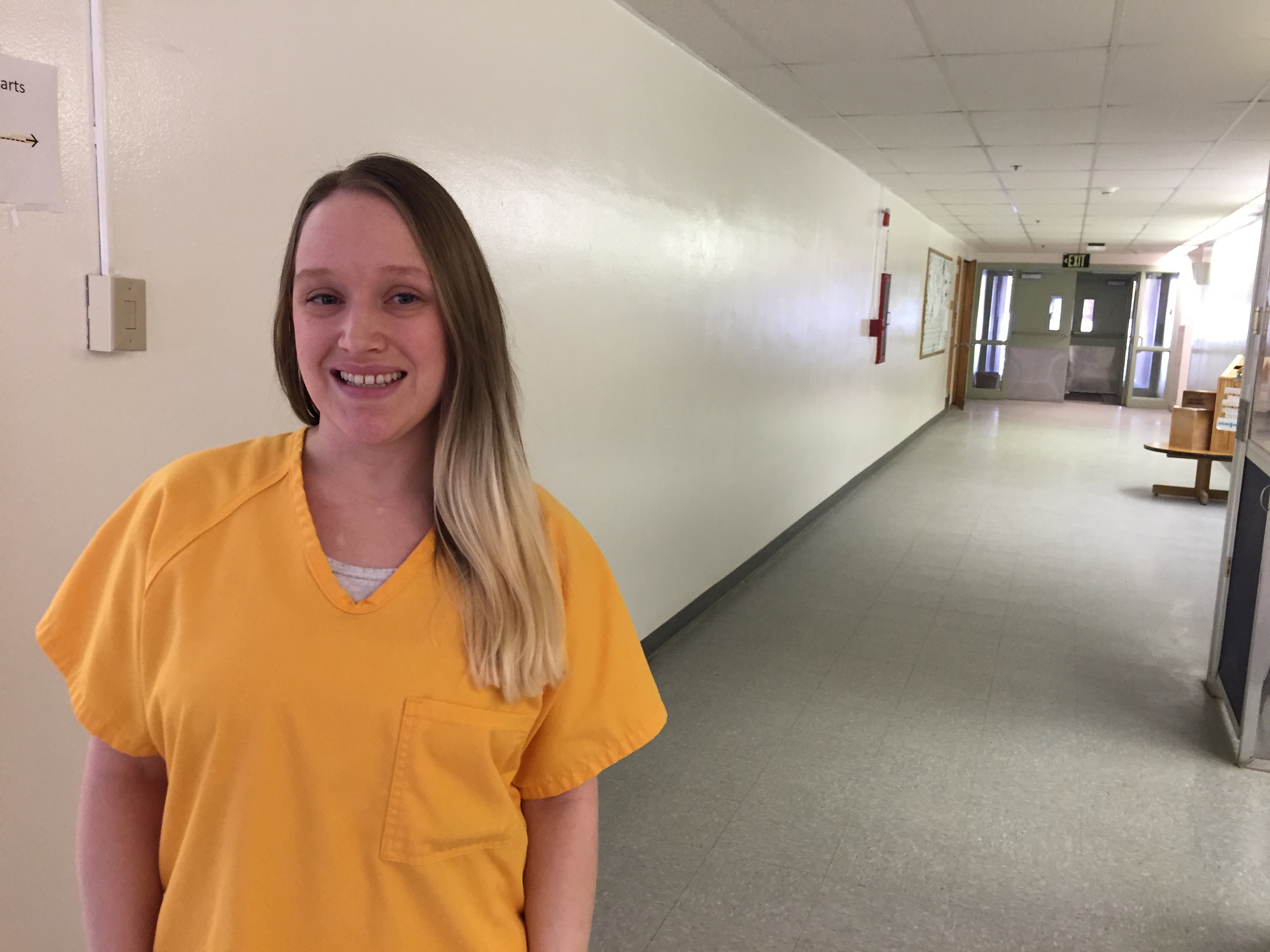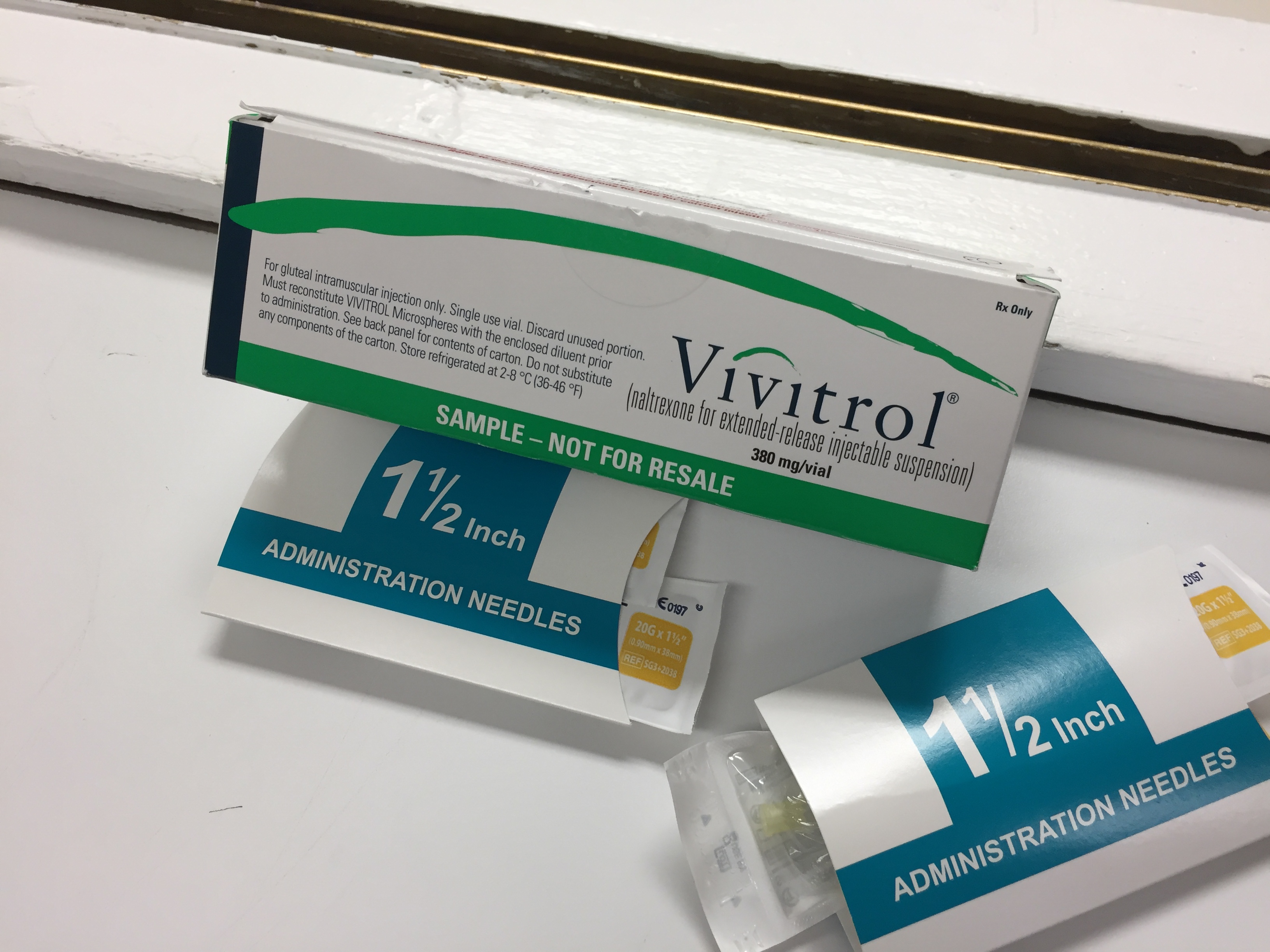
The state’s Department of Corrections is trying a new tactic to stop the opioid epidemic: offering Vivitrol shots, a monthly injection that curbs cravings for heroin and other drugs and stops people from getting high.
The pilot program launched recently at Hiland Mountain Correctional Center, where Sadie Douglas has been serving her sentence for the past two years.
“I got here, and I was completely hopeless. I really was,” she said during an interview earlier this month. “I suffered from severe depression when I first got here.”
Douglas’ story is pretty common among people with addictions.
She was prescribed pain pills, got hooked, and eventually switched to heroin. In the process, she lost her husband and kids.
Eventually, she was convicted of drug and theft charges. Since entering Hiland she’s joined a sobriety program and found faith in God.
But even after not using opioids for two years, “it’s always there in the back of your mind,” she said. “If you’re having a bad day or feel sad or alone or you just miss your family and you don’t want to feel those feelings, then you think, ‘Well why don’t I just go get high’ and you don’t have to feel any of it.”
That’s why she’s joined the Department of Corrections’ new Vivitrol program.
Vivitrol is an injectable form of naltrexone that blocks cravings for opioids and prevents people from getting high off of them.
Naltrexone has been around for decades in a pill form, but for the pills to stop cravings, you have to remember to take them every day. Vivitrol is administered once a month by a provider.
It’s similar to the drug naloxone, or Narcan, which is used to reverse overdoses. Both block receptors for opioids, but naltrexone has a longer-lasting effect.
Autumn Vea, who oversees substance abuse programs for the Department of Corrections, said giving inmates an injection right before they re-enter the community helps them stay sober longer, but it still needs to be given alongside other therapy or counseling.
“Oftentimes when offenders re-enter into the community, all their triggers come back,” she said. “This will help them block their cravings long enough to either be – one –connected to an aftercare provider or –two— go on to live a sober, healthy lifestyle if they’ve learned enough coping skills behind the walls.”
Prisons across the nation are offering Vivitrol and the early data is promising, but the medication hasn’t been around long enough for extensive studies to be completed.
Pew Charitable Trusts reports that Vivitrol recipients at a prison in Massachusetts only had a nine percent recidivism rate over four years. That’s compared to the 77 percent national re-arrest rate for drug offenders, according to Bureau of Justice Statistics.

Vivitrol won’t work for everyone.
Vea said it can increase symptoms of depression and psychosis and can cause liver damage, so they test for all these things before administering it.
“Part of our diagnostic process is making sure that Vivitrol is the right medication for the right offender at the right time,” she said.
The pilot program is starting at Hiland, but will eventually be offered at correctional facilities in Anchorage and Fairbanks.
As of mid-April, four people had received the shot. The drug’s manufacturer gave 1,200 free samples of the medication to the department. On the outside, the monthly injection can cost about $1,000 if a person doesn’t have Medicaid or insurance.
The department is also looking into offering two other addiction treatment medications in the future methadone and buprenorphine, Vea said.
Douglas will receive her first shot a few days before she’s released in late April. She’s a different person than she was when she walked into Hiland two years ago, she said.
“I didn’t understand for a little while how people functioned on just air,” she said. “Life’s hard and it hurts, but with people by your side and doing things the right way, you can get through it.”
Douglas has a strong support system waiting for her on the outside, and she plans to enter treatment as soon as she’s released.
Families and others can refer inmates to the program by contacting the Department of Corrections at doc.substanceabuse@alaska.gov.
